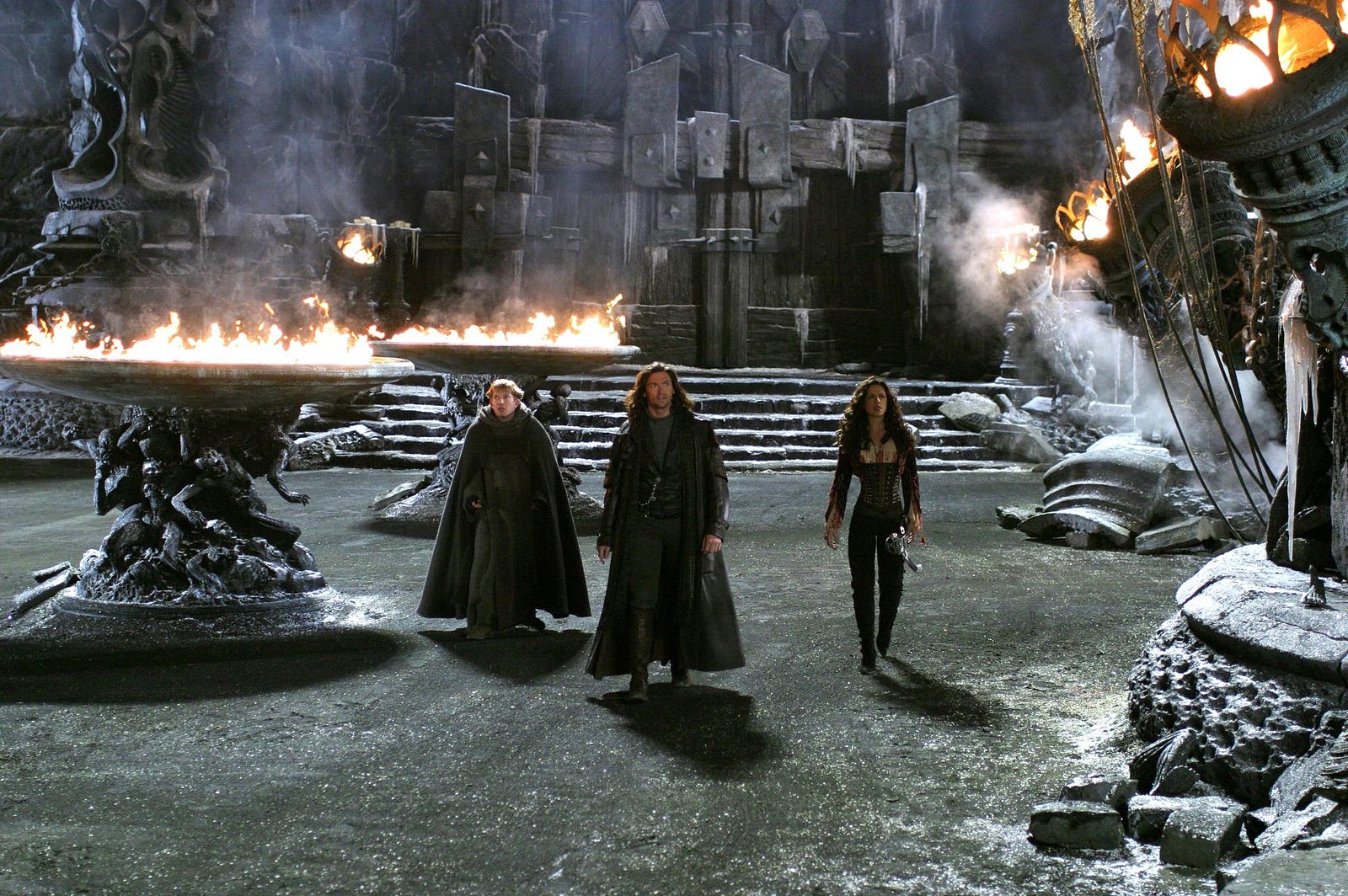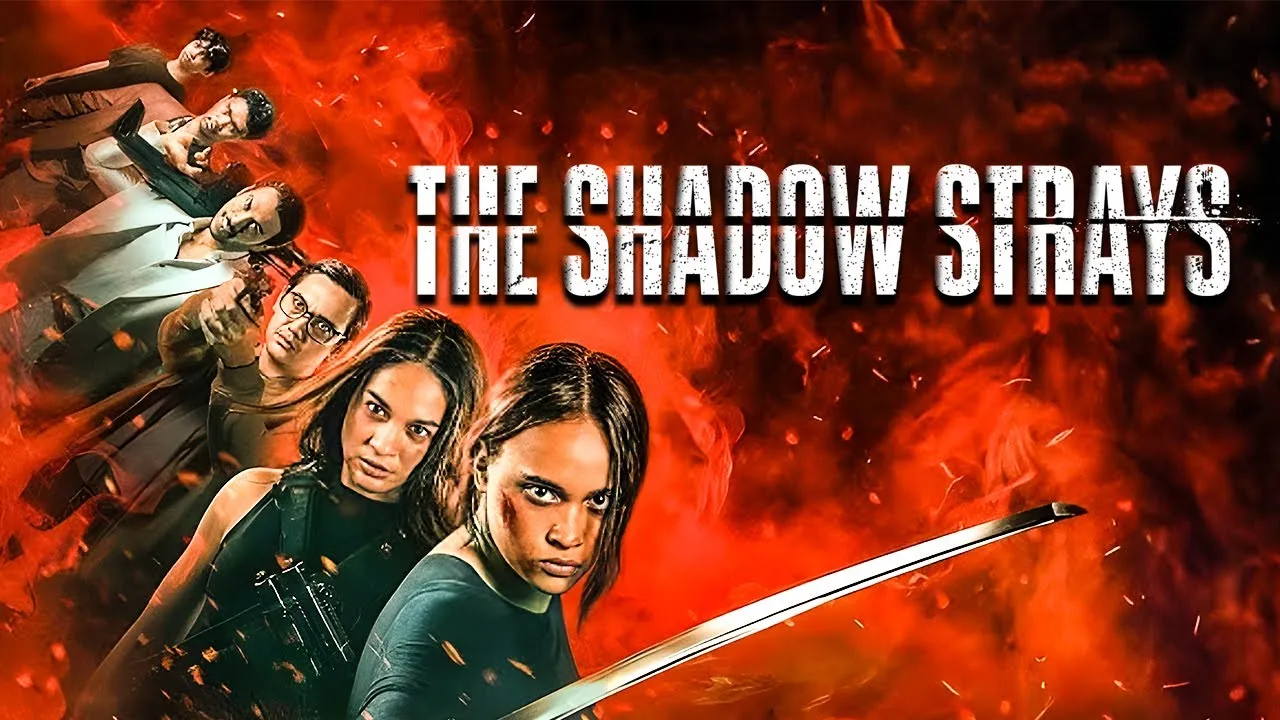Directed by Stephen Sommers, Van Helsing is a gothic action-horror adventure that reimagines classic Universal monsters in a high-octane, supernatural setting. Starring Hugh Jackman as the mysterious monster hunter Gabriel Van Helsing and Kate Beckinsale as the fierce Anna Valerious, the film blends ancient curses, dark science, and relentless battles into a pulpy, genre-bending spectacle.
Plot Summary
The film opens in 1887 Transylvania, where Count Dracula orchestrates the resurrection of his undead lineage through forbidden science. Using Dr. Frankenstein's monster as a key component, Dracula plans to give life to his thousands of dormant vampire offspring.
Enter Gabriel Van Helsing, a member of a secret order based in the Vatican, tasked with hunting down supernatural threats across the world. Plagued by amnesia and a haunted past, Van Helsing is dispatched to Transylvania to stop Dracula and protect the last of the Valerious bloodline.

There, he meets Anna Valerious, a warrior princess whose family has been cursed to remain in limbo until Dracula is destroyed. Despite early conflict, the two form an uneasy alliance as they confront Dracula, his three vampiric brides, werewolves, and legions of undead.
As they fight their way through haunted forests, crumbling castles, and stormy skies, Van Helsing learns that he may be more than just a man — he may be connected to an ancient celestial force sent to battle darkness across time.
The climax culminates in a ferocious confrontation between Van Helsing (transformed into a werewolf himself) and Dracula, revealing that only a werewolf can kill the vampire lord. The battle ends with Dracula’s death and the lifting of the Valerious family curse — but at great cost.
Character Commentary
-
Gabriel Van Helsing (Hugh Jackman): Jackman plays Van Helsing with a brooding intensity, equal parts James Bond and biblical avenger. He is a man of faith, fury, and mystery — tormented by fragmented memories and the burden of divine purpose.
-
Anna Valerious (Kate Beckinsale): Anna is a refreshing take on the traditional "damsel in distress" — she’s fierce, skilled in combat, and motivated by deep family loyalty. Beckinsale brings physicality and emotional weight to a role that could’ve easily been overshadowed by the action.
-
Count Dracula (Richard Roxburgh): This version of Dracula is flamboyant, manipulative, and dangerous. Roxburgh’s portrayal leans toward the theatrical, but beneath the charm is a being of pure malevolence. His twisted longing for immortality through offspring makes him both a villain and a metaphor for unchecked ambition.
-
Frankenstein’s Monster: Surprisingly sympathetic, the creature (voiced by Shuler Hensley) becomes a symbol of misunderstood creation. His presence adds a layer of emotional conflict to the story’s moral compass.
Themes and Symbolism
-
Redemption and Identity: Van Helsing’s arc is built around rediscovering his lost identity and redeeming himself for sins he can’t even remember. His inner struggle adds emotional resonance to a film filled with outward spectacle.
-
Science vs. Superstition: The clash between Dracula’s use of Frankenstein’s technology and Van Helsing’s holy weapons plays into the film’s recurring theme — the dangers of blending god-like ambition with man-made creation.
-
The Nature of Monsters: Not all monsters in the film are evil, and not all men are just. This moral grayness, especially seen in Frankenstein’s Monster and the werewolf curse, challenges the viewer’s expectations.
-
Fate and Free Will: Anna and Van Helsing both grapple with destinies laid out for them — hers to end her family’s curse, his to fulfill a divine calling. Their choices along the way reflect humanity’s constant tension between duty and desire.
Visual Style and Effects
Visually, Van Helsing is drenched in gothic atmosphere. Rain-soaked villages, howling mountaintops, towering castles, and torch-lit crypts provide a lush, haunted backdrop. The production design leans into classic horror tropes but modernizes them with flair and CGI-heavy sequences.
The creature design is both nostalgic and innovative. Dracula’s brides soar and screech through the air in flowing garments, Frankenstein’s monster is built with love and dread, and the werewolves are muscular, feral, and terrifying.
While the film’s CGI hasn’t aged perfectly, especially during fast-paced transformation scenes, it retains a stylized energy that suits the fantastical tone.

Action and Pacing
The film rarely slows down — it throws viewers from one action set-piece to another with barely time to breathe. Crossbow duels with vampires, chases through collapsing buildings, werewolf transformations mid-fight — it’s a visual rollercoaster.
This relentless pace is a double-edged sword. While thrilling, it sometimes overshadows character development and quiet emotional beats. Still, for fans of monster-hunting mayhem, it’s an absolute feast.
Legacy and Reception
Van Helsing received mixed reviews upon release. Critics cited its overreliance on CGI and its chaotic plot, while fans appreciated its ambitious world-building, mythological depth, and pulpy style.
Over the years, the film has gained a cult following, especially among fans of dark fantasy and monster cinema. Its unique tone — part horror, part adventure, part spiritual odyssey — sets it apart from more grounded reimaginings of the Dracula mythos.
It remains a beloved guilty pleasure and a gateway film for younger audiences discovering the horror-action genre.

Final Thoughts
Van Helsing (2004) is a bold, supernatural adventure that pays homage to the great monster movies of the past while carving its own legend. It may not be perfect, but it's rich with style, energy, and a compelling antihero who’s part crusader, part cursed soul.
In a genre often afraid to go all-in, Van Helsing embraces the madness of its world — and dares to make monster-hunting cool again.

-1750991024-q80.webp)

